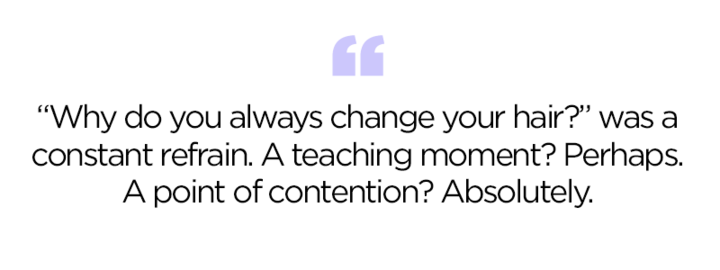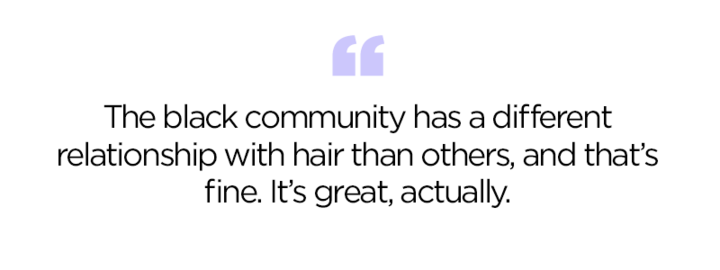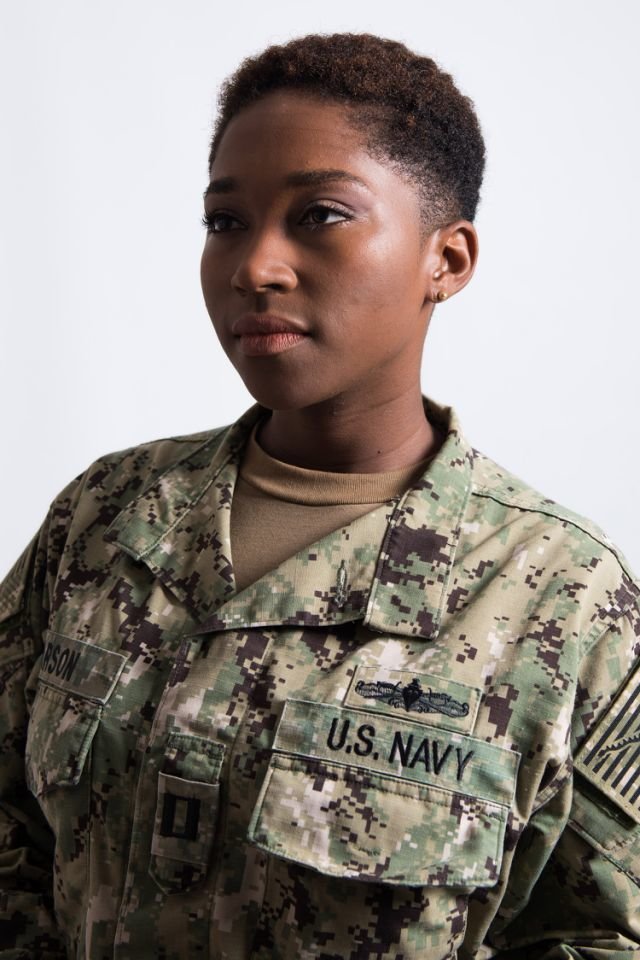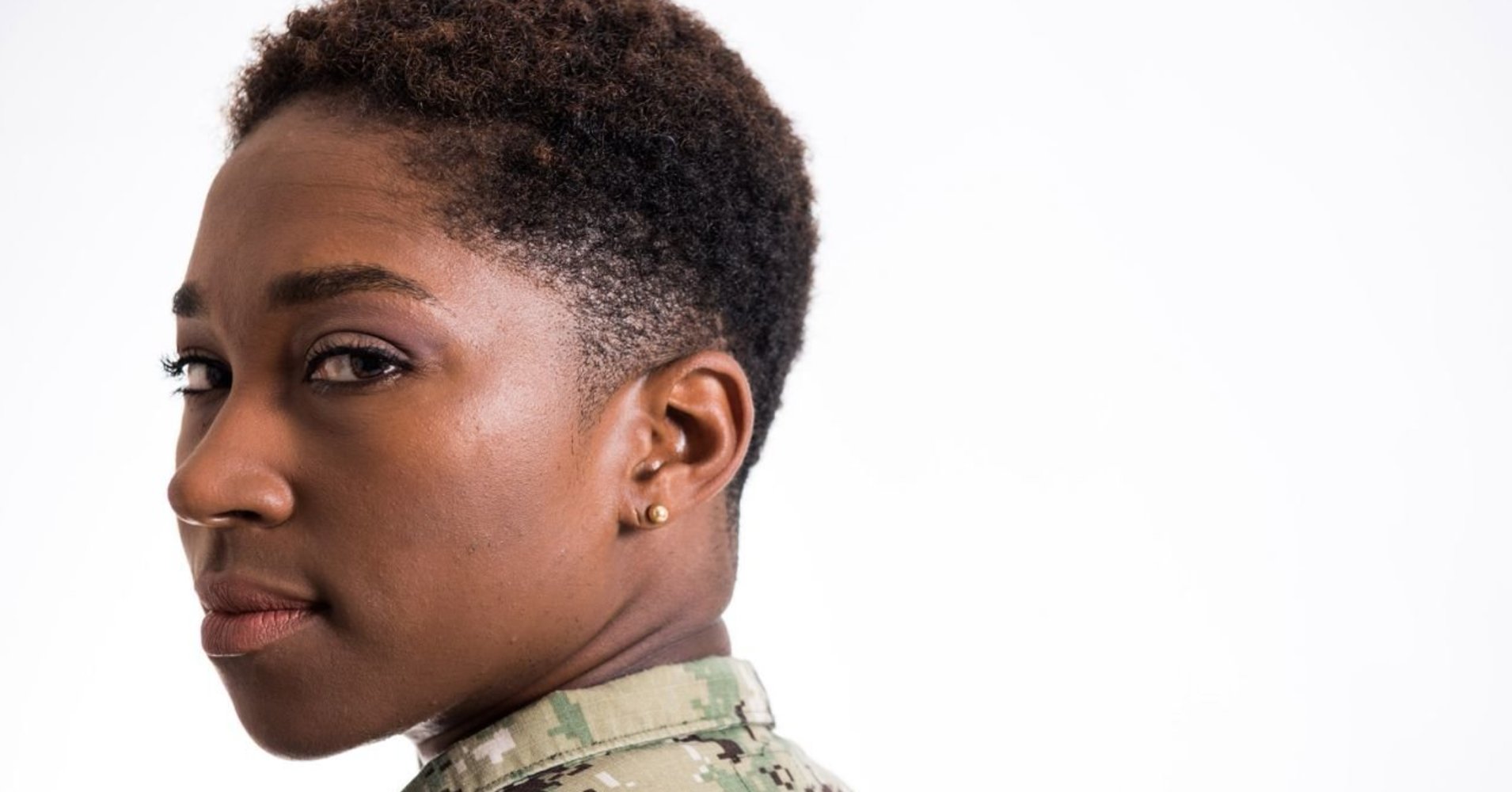[ad_1]
On July 10, leadership within the U.S. Navy took to Facebook Live to announce revolutionary updates to the military branch’s hair policy. Servicewomen would now be allowed to wear hairstyles such as braids, ponytails, and locs, which were previously banned. In this first-person essay, Lt. Tiffany D. Pearson explains how these changes affect her life as a black woman in the Navy.
We can wear ponytails and locs in uniform tomorrow?! I couldn’t believe what I was reading — the U.S. Navy was finally allowing the heretofore unimaginable, a new shift in hair regulations. Though I’ve recently opted for a low fade, I celebrated with black women throughout the fleet when I learned yet another style intrinsic to my heritage and conducive to healthy hair was no longer deemed “unprofessional.” For me, this policy shift was a détente of sorts — an easing of tension between my natural hair and Navy regulations. Reconciliation between my service and myself has removed the burden competing factors once presented.
The new Navy policy sets forth the most significant changes to the hair grooming regulations I’ve seen in my eight years of enlisted and commissioned service. The policy seems to take into consideration the multicultural diversity of the U.S. Navy. It offers a broader and more inclusive version of what it means to “look professional.”
The chief of naval operations (CNO) made the announcement regarding this ambitious policy change surrounded by black female sailors who took part in the policy working group. In many ways, that video symbolized for me a shift in perspective. It showed me a Navy comprised of sailors from all walks of life, socioeconomic statuses, and backgrounds. By including a number of diverse voices in the policy process, the Navy was able to produce a far-reaching policy that brought about more equity — a recognition that there is nothing inherently unprofessional about my hair in its natural state. Valuing core facets of each sailor elicits a sense of dignity, as they serve with honor, courage, and commitment. No need to sacrifice personhood to do so.
I entered Navy training in 2011 with a low-cut fade and a desire for adventure. One year, a few relaxers, and many days of “hat hair” later, I decided transitioning back to my natural curls was a must. The response was not good. “Did you stick your finger in a light socket?” asked a senior officer. I’d planned to take a year in transitioning, but the constant negative feedback resulted in a swift cut — a small Afro that drew fewer comments and less scrutiny.

Yahoo Lifestyle
Of course, I was no stranger to changing my hair, but growing up, I’d never encountered issues like this. Having a new “look” was the norm in my neighborhood, where no one had ever asked if, perhaps, “a new hairstyle would be better.” My mother, who doubled as my hairstylist when the financial luxury of salon visits was not an option, was the creative director of my many and varied hairstyles. Hot combs pressed my natural, incredibly thick, full hair straight until I received my first “relaxer” no thanks to a cousin. Shirley Temple curls, beaded braids, ponytails, twist sets, roller sets, and “doobie wraps” mark my evolution from childhood through college.
As a first-generation, full-time independent student working three jobs, I learned to do my own hair. My “Johnny Bravo” was a particular favorite. Like other students, I also depended upon “kitchen beauticians” (unlicensed cosmetologists) to manipulate my hair when I wasn’t able to due to lack of funds and a tight schedule. Even that was a luxury of sorts. Still, in all of these places, I felt at home. My hair was never unprofessional, it was just a part of me — an ever-changing extension of myself. After graduating from the University of South Carolina Upstate and Navy Officer Candidate School, I reported to my first command and all that changed.
Suddenly, I was put under the microscope, and so was my hair. It was too puffy or not slick enough — my eventual bun became too thick. My ever-changing hairstyles were now perceived as indecisiveness on my part. “Why do you always change your hair?” was a constant refrain. A teaching moment? Perhaps. A point of contention? Absolutely.

Yahoo Lifestyle
I began to question myself deeply before realizing a few things. I was created in the Imago Dei — exactly how God intended for me to be — curls and all. The black community has a different relationship with hair than others, and that’s fine. It’s great, actually. Regular hair appointments and style changes are a facet of black culture. Perception is reality, though, and regardless of how I felt, I still had a Navy standard to maintain, at all costs. Since then, I have seen and worn every authorized style possible. No expense has been spared. Time, money, and mileage become expendable when mandatory salon visits help meet the objective and obtain the illusive distinction as “professional.”
While the new regulations aren’t perfect (still no faux locs!), they do provide an expanded vision of what “professional” can look like, including hair that looks like mine. Truthfully, this has removed an unnecessary stressor from my life and opened up a world of possibilities. Who knows, I may eventually start locs of my own or opt to wear a wig. I may go back to styles I’m familiar with. Whatever I choose to do, the options have expanded, and while not perfect, the tension between my hair and Navy regulations has eased.

Photo: MC2 Alora Blosch and MC1 TJ Godbold
More from Yahoo Lifestyle:
[ad_2]
Source link

